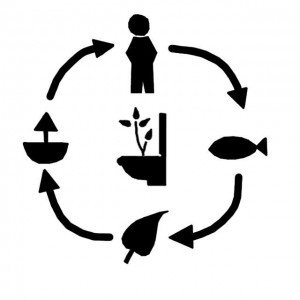Due to the lack of relocation policies in host countries and ongoing crises in the countries of origin, refugees and Internally Displaced People (IDPs) find themselves waiting for weeks, months, years and even decades in the camps that were initially considered a temporary measure. In such Prolonged Encampments, the sanitation services must not only continue to prevent contagious diseases and epidemics and ensure good health and dignity, they must also increasingly support the self-sufficiency of the beneficiaries and must extend beyond covering minimum standards. However, the The Sphere Project Standards Minimum Standards relating to sanitation continue to be relevant for prolonged encampment settings:
- SPHERE, Water, Sanitation, and Hygiene (WASH) Standard 1: WASH Programme design and Implementation. WASH needs of the affected population are met and users are involved in the design, management and maintenance of the facilities where appropriate. The indicators for achieving this standard specify the required number of household per latrines.
- SPHERE, Excreta Disposal Standard 1: Environment free from human faeces. The living environment in general and specifically the habitat, food production areas, public centres and surroundings of drinking water sources are free from human faecal contamination.
- SPHERE, Excreta Disposal Standard 2: Appropriate and adequate toilet facilities. People have adequate, appropriate and acceptable toilet facilities, sufficiently close to their dwellings, to allow rapid, safe and secure access at all times, day and night.
- SPHERE, Drainage Standard 1: Drainage work. People have an environment in which health risks and other risks posed by water erosion and standing water, including storm water, floodwater, domestic wastewater and wastewater from medical facilities, are minimised.
Sanitation systems should be designed to have an impact beyond the immediate crisis and to prevent further emergencies from happening (EUROPEAN COMMISSION 2014). The focus of interventions in prolonged encampment settings should lie on cost-effectiveness, quality and durability of the service and/or the replacement or upgrade of temporary services. Adequate Ensuring Appropriate Operations and Maintenance Services is vital to avoid the deterioration of sanitation systems. Since the sanitation systems must be able to endure beyond the emergency phase, design, execution and maintenance of the proposed solutions should be owned by the beneficiaries.
The section below presents a selection of sanitation systems and technologies appropriate for Prolonged Encampments. Although the selection was performed by a team of experts, practitioners should always consider the local environmental, technical, financial, social and economic framework conditions when selecting technologies. For the full range of available sanitation systems and technologies, please consult the Compendium of Sanitation Systems and Technologies.
A review of water and sanitation provision in refugee camps in association with selected health and nutrition indicators – the need for integrated service provision
International Organization for Migration (IOM), Norwegian Refugee Council (NRC) and UN Refugee Agency (UNHCR)`s Camp Management Toolkit provide tools and approaches to provide concrete guidance on facilitating hygiene improvement in an acute, early stage of an emergency relevant to camps. This toolkit is applicable to both IDPs and refugees living in communal settings.
CRONIN, A. ; SHRESTHA, D. ; CORNIER, N. ; ABDALLA, F. ; EZARD, N. ; ARAMBURU, C. (2008): A review of water and sanitation provision in refugee camps in association with selected health and nutrition indicators – the need for integrated service provision. In: Journal of Water and Health: URL [Accessed: 26.10.2016]Water, Sanitation and Hygiene. Meeting the challenge of rapidly increasing humanitarian needs in WASH. DG ECHO Thematic Policy No.2
This thematic policy document provides information on meeting the challenges of rapidly increasing humanitarian needs. It provides information on basic principles of humanitarian response, emergency response and preparedness and response in acute, post-acute, protracted, and chronic crises, key determinants for interactions, guidance on coordination, advocacy, decision trees, and technical guidelines. It provides various insights on operations and maintenance planning for humanitarian crisis needs. The EC humanitarian WASH assistance follows the following objectives: 1) To ensure timely and dignified access to sufficient and safe WASH services for populations threatened by on-going, imminent or future humanitarian crises, and to increase their resilience to withstand water stress and shocks. 2) To implement measures to prevent the spread of WASH related diseases in populations threatened by on-going, imminent or future humanitarian crises. 3) To enhance the impact, relevance, efficiency and effectiveness in the delivery of WASH assistance by strengthening the capacities of the humanitarian aid system, including its coordination mechanism.
EUROPEAN COMMISSION (2014): Water, Sanitation and Hygiene. Meeting the challenge of rapidly increasing humanitarian needs in WASH. DG ECHO Thematic Policy No.2. Brussels: European Commission URL [Accessed: 31.10.2016]Compendium of Sanitation Systems and Technologies. 2nd Revised Edition
This compendium gives a systematic overview on different sanitation systems and technologies and describes a wide range of available low-cost sanitation technologies.
TILLEY, E., ULRICH L., LÜTHI, C., REYMOND P. and ZURBRÜGG C. (2014): Compendium of Sanitation Systems and Technologies. 2nd Revised Edition. Duebendorf, Switzerland: Swiss Federal Institute of Aquatic Science and Technology (Eawag) URL [Accessed: 03.05.2023] PDFThe Sphere Handbook
This appendix of SPHERE handbook is a water supply and sanitation initial needs assessment checklist. This list of questions is primarily for use to assess needs, identify indigenous resources and describe local conditions. It does not include questions to determine external resources needed in addition to those immediately and locally available.
THE SPHERE PROJECT (2011): The Sphere Handbook. Rugby: Practical Action Publishing URL [Accessed: 19.10.2016]Compendium of Sanitation Systems and Technologies (Arabic)
This is the Arabic version of the Compendium of Sanitation Systems and Technologies. The Compendium gives a systematic overview on different sanitation systems and technologies and describes a wide range of available low-cost sanitation technologies.
TILLEY, E. ULRICH, L. LUETHI, C. REYMOND, P. SCHERTENLEIB, R. ZURBRUEGG, C. (2014): Compendium of Sanitation Systems and Technologies (Arabic). 2nd Revised Edition. Duebendorf, Switzerland: Swiss Federal Institute of Aquatic Science and Technology (Eawag) PDF

